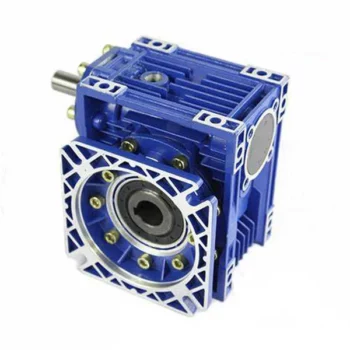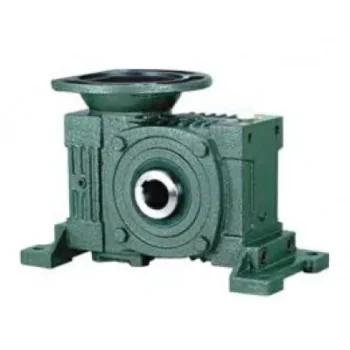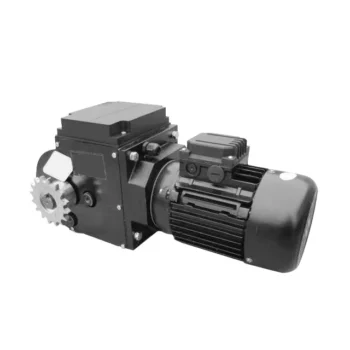Product Description
Model: XHW35LPG2 worm gearbox for valve
Double stage, vertical
Application
XHW part turn worm gearboxes are applied to dampers, ball valves, butterfly valves and also other 90° quarter turn valves.XHW part turn worm gear operator has variety models of hand wheel for optional.
Operating Environment
XHW part turn worm gearboxes are with good mechanical quality and steady operating performance which apply to deal with variety climate and temperature. We strive to develop RHW part turn worm gear operators to meet higher demands.
Enclosure: IP67
Working Temperature: From -20ºC to 120ºC( -4ºF to 248ºF)
Painting: Silver grey (Customization)
Introduction
XHW series Part-turn Gearboxes use worm and worm wheel revolute pairs, with high performance needle roller bearing assembled on both ends of the worm shaft. It ensures the thrust requirement during rotation. It’s in high mechanical efficiency withstands big torque, small size with compact design, and it’s also easy to operate and has reliable self-locking function.
Characters
1.Precision casting ductile iron housing
2.Optional output torque, range up to 32000Nm
3.High efficient needle roller bearing
4.High strength steel input shaft
5.Stroke 0°- 90°( ±5°)
6.Compact structure
7.Grease filled for longer life
8.Adjustable stopper (±5°)
9.Good seal
Connect with valve
The flange connecting to valve is according to ENISO5210 or DIN3210(Customization)
Main Products
Worm gearbox, bevel gearbox, valve gear box, worm gear operator, worm gear actuator, valve worm gear, valve gear operator, valve gear actuator, valve actuator
Gear Operator, Valve Gearbox, Worm Gearbox, Gearbox, Speed Reducer, Part-turn Worm Gearbox, Worm Gearbox Supplier, High Quality Worm Gearbox, Gearbox manufacturer
(XHW35-PG4S)
/* January 22, 2571 19:08:37 */!function(){function s(e,r){var a,o={};try{e&&e.split(“,”).forEach(function(e,t){e&&(a=e.match(/(.*?):(.*)$/))&&1
| Application: | Industry |
|---|---|
| Type: | Worm and Wormwheel |
| Protection Level: | IP67 |
| Working Temperature: | -20 to 120 Degrees Celsius |
| Applications: | Ball Valves, Butterfly Valves, Dampers and etc. |
| Painting: | Silver Grey or Customization |
| Customization: |
Available
| Customized Request |
|---|

Common Problems and Troubleshooting for Worm Gearboxes
Worm gearboxes, like any mechanical component, can experience various issues over time. Here are some common problems that may arise and possible troubleshooting steps:
- Overheating: Overheating can occur due to factors such as inadequate lubrication, excessive loads, or high operating temperatures. Check lubrication levels, ensure proper ventilation, and reduce loads if necessary.
- Noise and Vibration: Excessive noise and vibration may result from misalignment, worn gears, or improper meshing. Check for misalignment, inspect gear teeth for wear, and ensure proper gear meshing.
- Leakage: Oil leakage can be caused by damaged seals or gaskets. Inspect seals and gaskets, and replace them if necessary.
- Reduced Efficiency: Efficiency loss can occur due to friction, wear, or misalignment. Regularly monitor gearbox performance, ensure proper lubrication, and address any wear or misalignment issues.
- Backlash: Excessive backlash can affect precision and accuracy. Adjust gear meshing and reduce backlash to improve performance.
- Seizure or Binding: Seizure or binding can result from inadequate lubrication, debris, or misalignment. Clean the gearbox, ensure proper lubrication, and address misalignment issues.
- Worn Gears: Worn gear teeth can lead to poor performance. Regularly inspect gears for signs of wear, and replace worn gears as needed.
- Seal Wear: Seals can wear over time, leading to leakage and contamination. Inspect seals regularly and replace them if necessary.
If you encounter any of these problems, it’s important to address them promptly to prevent further damage and maintain the performance of your worm gearbox. Regular maintenance, proper lubrication, and addressing issues early can help extend the lifespan and reliability of the gearbox.

Materials Used for Worm Gears
Worm gears are manufactured using a variety of materials to meet different application requirements. Some commonly used materials for worm gears include:
- Steel: Steel is a popular choice for worm gears due to its strength, durability, and wear resistance. It can handle heavy loads and is often used in industrial applications.
- Bronze: Bronze offers good lubricity and is commonly used for the worm gear (worm) component. It provides effective wear resistance and works well in applications where quiet operation is essential.
- Cast Iron: Cast iron is known for its high strength and durability. It’s often used for worm gears in applications where shock loads or heavy-duty conditions are expected.
- Aluminum: Aluminum worm gears are lightweight and corrosion-resistant, making them suitable for applications where weight reduction is important.
- Plastic: Some worm gears are made from plastic materials such as nylon or acetal. These materials are often chosen for their self-lubricating properties and quiet operation.
- Composite Materials: Composite materials can offer a combination of properties, such as lightweight construction and corrosion resistance. They can be suitable for specific applications.
The choice of material depends on factors such as the application’s load, speed, operating environment, and required performance characteristics. It’s important to consider these factors when selecting the appropriate material for worm gears to ensure optimal performance and longevity.

Lubrication Requirements for a Worm Gearbox
Lubrication is crucial for maintaining the performance and longevity of a worm gearbox. Here are the key considerations for lubricating a worm gearbox:
- Type of Lubricant: Use a high-quality, high-viscosity lubricant specifically designed for worm gearboxes. Worm gearboxes require lubricants with additives that provide proper lubrication and prevent wear.
- Lubrication Interval: Follow the manufacturer’s recommendations for lubrication intervals. Regularly check the gearbox’s temperature and oil condition to determine the optimal frequency of lubrication.
- Oil Level: Maintain the proper oil level to ensure effective lubrication. Too little oil can lead to insufficient lubrication, while too much oil can cause overheating and foaming.
- Lubrication Points: Identify all the lubrication points on the gearbox, including the worm and wheel gear surfaces. Apply the lubricant evenly to ensure complete coverage.
- Temperature: Consider the operating temperature of the gearbox. Some lubricants have temperature limits, and extreme temperatures can affect lubricant viscosity and performance.
- Cleanliness: Keep the gearbox and the surrounding area clean to prevent contaminants from entering the lubricant. Use proper filtration and seals to maintain a clean environment.
- Monitoring: Regularly monitor the gearbox’s temperature, noise level, and vibration to detect any signs of inadequate lubrication or other issues.
Proper lubrication will reduce friction, wear, and heat generation, ensuring smooth and efficient operation of the worm gearbox. Always refer to the manufacturer’s guidelines for lubrication specifications and intervals.


editor by CX 2024-03-13